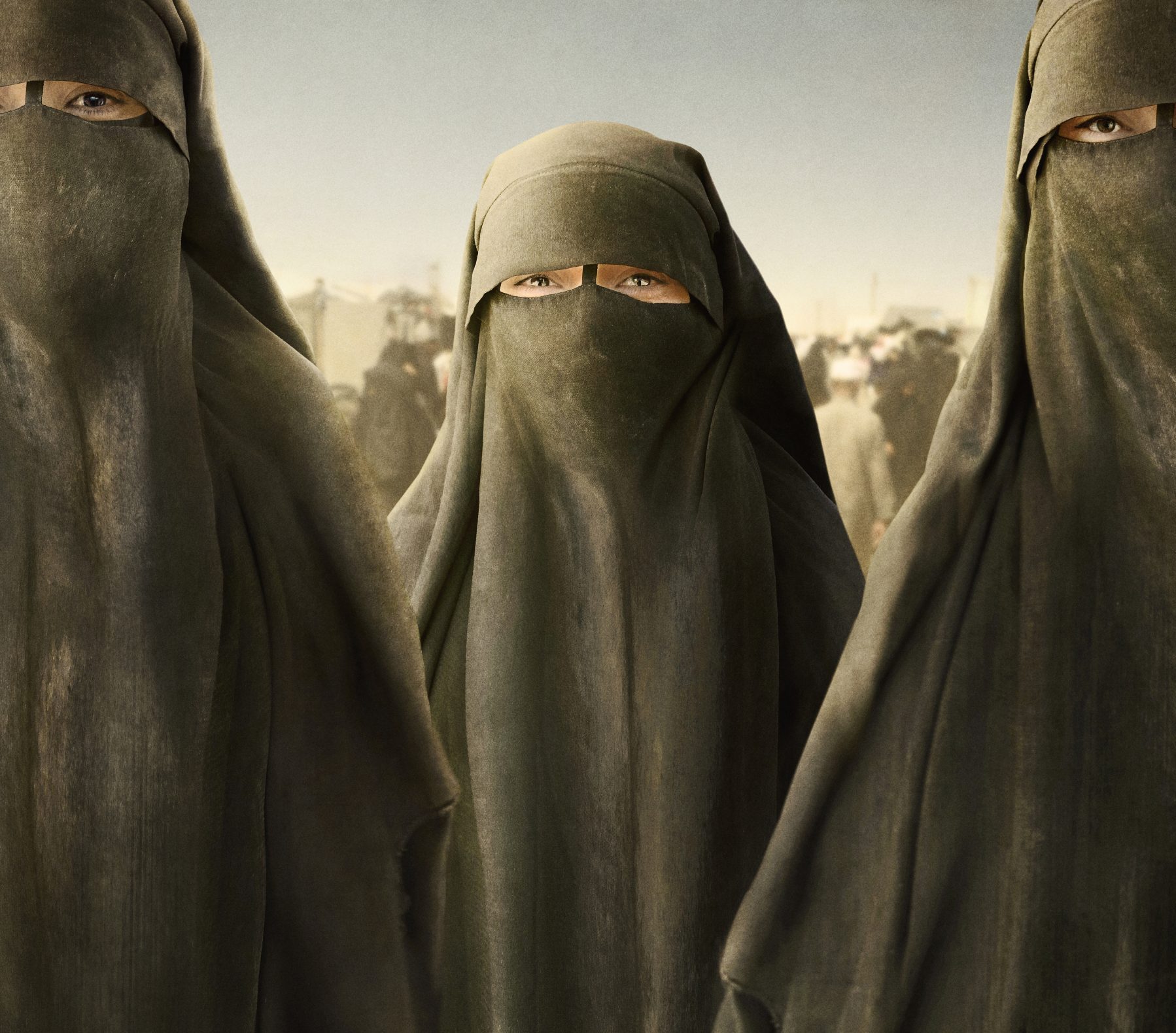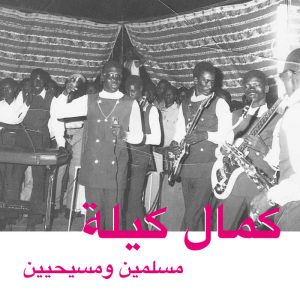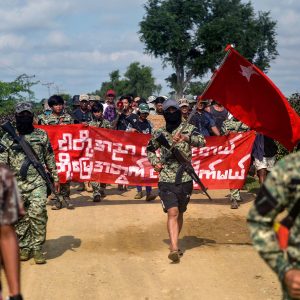She was sixteen years old when she killed three people. Passing through an Israeli checkpoint in Southern Lebanon on April 9, 1985, Sana’a Mehaidli was determined to become a martyr of the Syrian Social Nationalist Party. She triggered her explosive-laden Peugeot, killing herself and two nearby Israeli soldiers. She went down in history as the first universally recognized female suicide bomber and set the stage for future extremist women.
It’s an unsettling topic. Female suicide bombers are what Anne Preesman of King’s College London describes as “uncomfortable truth[s].” People tend to think of women as less violent, less commanding, less likely to walk into a crowd and detonate themselves.
It is a cognitive dissonance that has made the world’s governments complicit by omission, at the cost of thousands of lives. Their complete disregard for the roles of women as active participants, enablers, and mitigators of terrorism in the Middle East and North Africa has driven international policy to cast aside considerations for counterterrorism efforts that now need to be reevaluated.
Over the past several decades, women have actively participated in more than 60% of armed rebel groups. These bombings killed 1,200 people from 2014 to 2018, making up 11% of total suicide attacks and two-thirds of the attacks by terrorist organization Boko Haram. The role of female combatants is actively growing and evolving in unique ways that necessitate change.
On Christmas Day, 2010, a burka-clad woman rushed into a food distribution center in Pakistan filled with people who had fled nearby conflicts. The security checkpoint let her through to the densest part of the aid center, where she then threw two hand grenades towards the exits and detonated the belt of explosives she had hidden under her burka. She killed more than 45 people and injured over 100 more. She has been far from the only one to use this technique to ensure high fatalities.
Women often have unique access to areas that men are restricted from, making them increasingly valuable in attacks with the aim of mass casualty. Female combatants can more effectively hide weaponry and explosive material under traditionally baggy clothing like a burka or chador in order to avoid police suspicion. The secret mainly comes down to an assumption that women are inherently less violent than men, and the cultural inability of male police officers to search female civilians in certain parts of the world. As a result, women are let through security checkpoints because of a vulnerability in security systems, continually overlooked because of factually untrue assumptions. Among the top ten most affected countries by terrorism, most, like Afghanistan, Somalia, Pakistan, Iraq, and Myanmar have police forces with a female population of less than 3%. The highest rates are found in Burkina Faso, Mali, and Nigeria, whose female rates of police don’t crack 11.6%. The average comes out to 5.4%. Since stringent social norms strictly prohibit the searching of female civilians by male police officers, women often are let through security checkpoints without proper measures taken. Female combatants thus have access to densely populated areas without worry of a police search exposing the attack early. In highly controversial moves, sixteen countries have banned the burka after strings of bombings carried out by people wearing them. According to the North Atlantic Treaty Organization, one could hide 5-10 pounds of TNT under a burka, more if pretending to be pregnant.
For this very reason, terrorist attacks carried out by women have been calculated to be vastly more effective than those carried out by men. In individual attacks, women’s attacks have averaged 8.4 victims to men’s 5.3 – on average 125% more effective with half the amount of failed attempts.
It makes sense why women are recruited for these attacks. Greater access to restricted areas gives them effectiveness, and female combatants garner eight times the media attention as men do after a suicide bombing. What isn’t as immediately clear is why such large numbers of women decide to take their own lives in the name of an organization that, in most cases, advocates against their personal autonomy.
Sometimes it’s voluntary. Sometimes it’s not. Many women join terrorist organizations under a truly idealistic flag. Sana’a Mehaidli’s attack in 1985 and the aid center attack described above in 2010 were for political and religious reasons. They truly believed in the cause they died for. Others simply grew up in the organization and have no connections outside it. More join because terrorist cells offer women more rights than can be found in the outside world. In Nigeria, less than 4% of girls have the opportunity to finish secondary school. The Qur’anic schooling that Boko Haram offers is the only chance most women have to obtain an education.
Many women, however, do not join voluntarily. The sex trafficking market thrives in countries where terrorist cells are also thriving. Once the girls enter into the terrorist organization, one of several things can happen. In many cases, kidnapped girls are raped by members of the organization, and social stigma towards “unpure” women leads these girls to believe that martyrdom is the only way to regain their honor. Samira Ahmed Jassim, known as the “Mother of Believers” was arrested in 2009 in Iraq after orchestrating the rape of 80 young Iraqi girls. She told them that a suicide bombing was their only path to redemption after the dishonor they had brought to their families.
Other organizations use extensive religious schooling to rationalize the aims of the terrorist cell. Falmata, a girl kidnapped by Boko Haram, described to BBC News how she was given “up to four or five hours of religious teachings” daily. According to the Council on Foreign Relations, many “trafficking victims… become sympathetic to the group after exposure to its ideology.”
Even beyond initial routes of joining, women have substantially higher rates of rejoining after deradicalization programs than men do. This fact is almost fully attributable to the quality of life that they can expect from the outside world. Reports from Nigeria especially refer to the opportunities granted by terrorist organizations to obtain an education and to marry elite men who treated them far better than what they could hope for in their hometowns.
Even those who escape from those terrorist cells eventually return to their hometowns to find their circumstances unchanged or worsened. Fatima Akilu, Neem Foundation psychologist, describes the stigma that women face from their communities after mere association with terror cells as “secondary trauma.”
The real problem is that for many women, living in a terrorist organization provides the best life they can hope to find. That’s where counterterrorism efforts should be focusing. Quality of life has a direct relationship with the strength of terrorist organizations in the region.
Current counterterrorism efforts, however, do not reflect this changing landscape. Most countries and counterterrorism organizations do not even acknowledge the existence of women in terrorist cells, much less make any specific provisions for them. Instead, world governments prioritize military-centered options that do nothing to address the root causes of radicalization and the subsequent violence that it perpetuates.
One of the main organizations used to these ends is the Global Coalition to Defeat ISIS, an international counterterrorist organization of 81 member countries, including every NATO ally. As of 2017, they had launched more than 24,000 airstrikes in pursuit of ISIS’s defeat. Despite this, Afghanistan had held the spot of the number one most impacted country by terrorism for three consecutive years by the time foreign troops were withdrawn in 2021.
Dropping bombs may have pushed ISIS out of their territory, but those bombs may have never needed to be dropped if those people had not been kidnapped and radicalized in the first place. Combating counterterrorism at its roots requires a community-based approach in order to prevent radicalization where it begins. This, specifically, is where women are needed in counterterrorism efforts. In these communities, women are able to gain trust and integrate far better into the community, gaining access to the populations most at risk.
One Moroccan program disperses female religious scholars throughout the country to counter radical interpretations of Islam. According to the program’s director, Dete Aliah, “Women are uniquely placed to spread moderate messages in a way that imams and fathers can’t.” Two Indonesian programs, meanwhile, provide counseling and business training to the wives of imprisoned jihadis in order to break the cycle of terrorist affiliation in the family. Judith Jacob, a researcher at the London School of Economics, explained that “families are … a support structure when militants are released from prisons.” In this case, they are a support structure that prevents falling right back into violently radical organizations. Both of these programs have been extremely successful thus far in the areas they’ve been implemented.
Lastly, women need to be better represented in police forces in countries highly affected by terrorism. According to the Council on Foreign Relations, “The underrepresentation of women in security roles … creates a vulnerability that terrorist groups exploit to their advantage.” The promotion of women in local security forces negates one of the largest ways that terrorist groups use women as suicide bombers. By not allowing female combatants to gain admission into densely populated areas without proper security measures, thousands of people are automatically safer.
These community programs either need more resources so they can grow on their own, or international counterterrorist organizations need to take these highly effective ideas and expand them on their own terms. Perhaps these facts are not currently reflected in international policy because it’s not exactly polite dinner talk to go on a 1,500-word rant about women and terrorism. Especially because it’s not polite to challenge the popular ideal that women are nonviolent saints. But these are the facts. International policy needs to keep up.
Featured Image Source: Promotional image from “Sabaya,” MTV Documentary Films.






Comments are closed.